After more than five years of work and preparation, the Hortensia Herrero Art Centre (CAHH) opens its doors tomorrow with the aim of providing a new window on contemporary art and bringing it closer to those who live in or visit Valencia. Located in the heart of the city, the building, with 3,500 square metres of exhibition space, will house a selection from the private collection of Hortensia Herrero, vice president of Mercadona and president of the foundation that bears her name.
Well known for her commitment to art and culture, the president of the Hortensia Herrero Foundation has been the driving force behind this project, and her vision and dedication have been crucial in making it a reality. Between the restoration of the building and the various interventions, both architectural and artistic, the cost of the project has come to 40 million euros.
“This is a wonderful day for me. Seven and a half years has been a long period of my life, a long period of work for the architects, for Carlos Campos, Carlos Barberá, the Mercadona team and my colleagues in the Hortensia Herrero Foundation, led by Alejandra Silvestre. At last this art centre is a reality”, began Hortensia Herrero. “One of the objectives of my foundation is to care for the city’s heritage, to bring to light the beauty of buildings that are our history and are in ruins. With this restoration I think that objective is being fulfilled. Add to that my art collection and I think we’re creating a cultural focus in Valencia for both residents and visitors to enjoy.”
On the building, Herrero wanted to express her gratitude for “the work of the team of architects, and especially my daughter Amparo for the loving care and the hours she has put into this project. They’ve managed to adapt the unique features of the building, its nooks and crannies, its passages… to house great works. This is a little jewel in the heart of Valencia and they’ve brought out the very best in it.”
She gave an account of how her relationship with art began. “I’ve always enjoyed painting, art in general, handicrafts. I visited galleries, museums… and bought the odd picture, becoming a collector without realising. One day, Elena Tejedor, my fantastic project initiator at the Foundation, introduced me to Javier Molins while visiting Andreu Alfaro’s studio. With Javier we arranged the purchases so that everything was harmonious and made sense. That’s how we got involved in the world of galleries, fairs like Arco, Basel, Frieze, biennials like Venice. What with all this, we have some 50 artists represented in this art centre, some of them bought in Valencia galleries, thanks to Abierto València. In addition, we have six site-specifics. We selected six artists to make us specific installations for this centre, so that they would develop their creativity by embellishing it.”
Herrero ended by thanking “my husband, because without the results he obtains from his company, it would not have been possible to make this happen. Thank you all from my heart. I hope you like it as much as I do.”
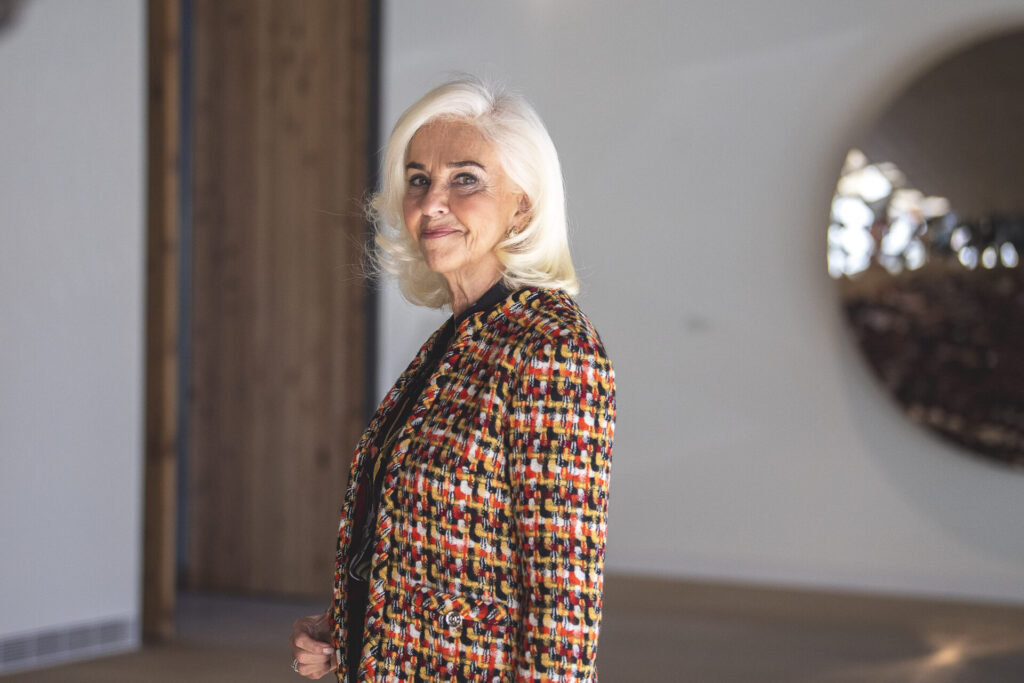
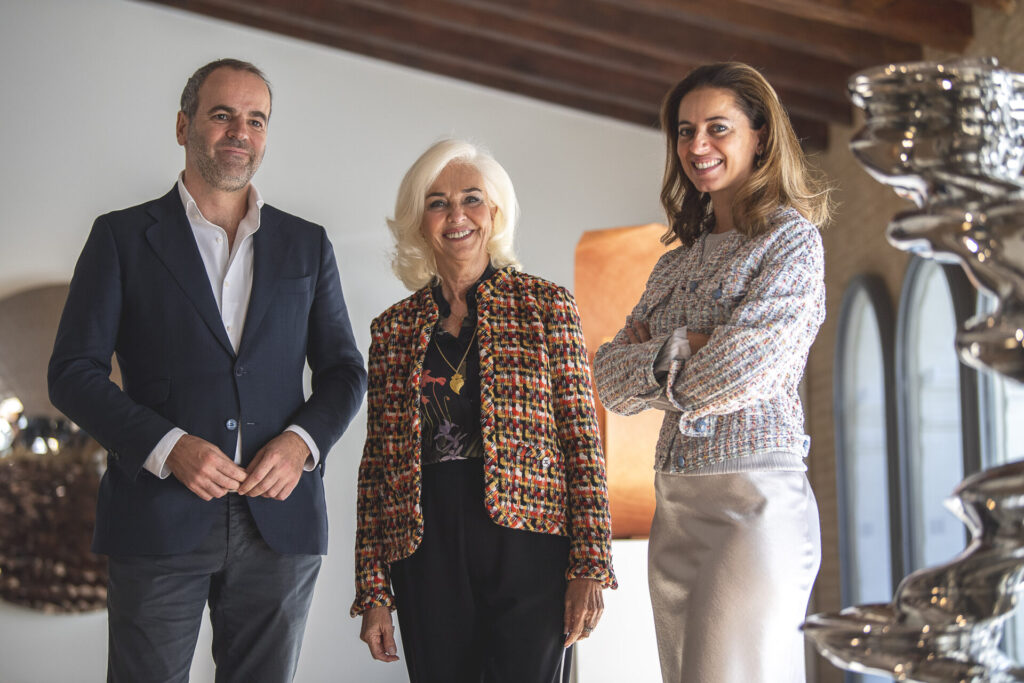
A private collection of contemporary art
Hortensia Herrero has always has a special sensitivity to art and has been collecting artworks for more than ten years. The Hortensia Herrero Art Collection has a clear international orientation, with contemporary artists of recognised stature that can be found in the collections of museums such as MoMA, the Tate or the Pompidou Centre, among many others. The first presentation of this collection, with which the Hortensia Herrero Art Centre will open its doors tomorrow, Saturday 11 November, includes over 100 works by more than 50 artists.
Names like Andreas Gursky, Anselm Kiefer, Georg Baselitz, Anish Kapoor, Mat Collishaw, Cristina Iglesias, Manolo Valdés, Michal Rovner, Ann Veronica Janssens, Eduardo Chillida and Tony Cragg are just some of the more than 50 artists whose work will be represented in one of the seventeen exhibition rooms in the Hortensia Herrero Art Centre. They are accompanied by internationally renowned figures such as David Hockney, El Anatsui and Peter Halley, and the Spanish artists Miquel Barceló, Blanca Muñoz, Julio González, Antonio Girbés, Juan Genovés and Joan Miró.
Javier Molins, artistic director of the Hortensia Herrero Art Centre, is the collection’s adviser: “Not only have we brought in a series of outstanding names in contemporary art, but we’ve brought in the best work by these artists, because there’s been a high degree of involvement on their part. In many cases they’ve been asked to do something specifically for the art centre or we’ve waited for some time to find the piece that best fitted into the collection.
Javier Molins began working on this collection with Hortensia Herrero a decade ago: “The collection and the centre that houses it are the product of two quite distinct yet complementary passions: on the one hand, the passion that Hortensia Herrero has always felt for art, which has prompted her to collect and put together a set of works of high quality, and on the other, her passion for the city of Valencia, which has led her to acquire one of its most representative buildings, restore it, bring to light a whole series of archaeological remains of the history of the city and open it to the public with her contemporary art collection. In this way, a very interesting dialogue is set up between the history of the city, starting in the Roman Empire, with its circus, part of which we can see in the subsoil of the building, and the most international contemporary art.”
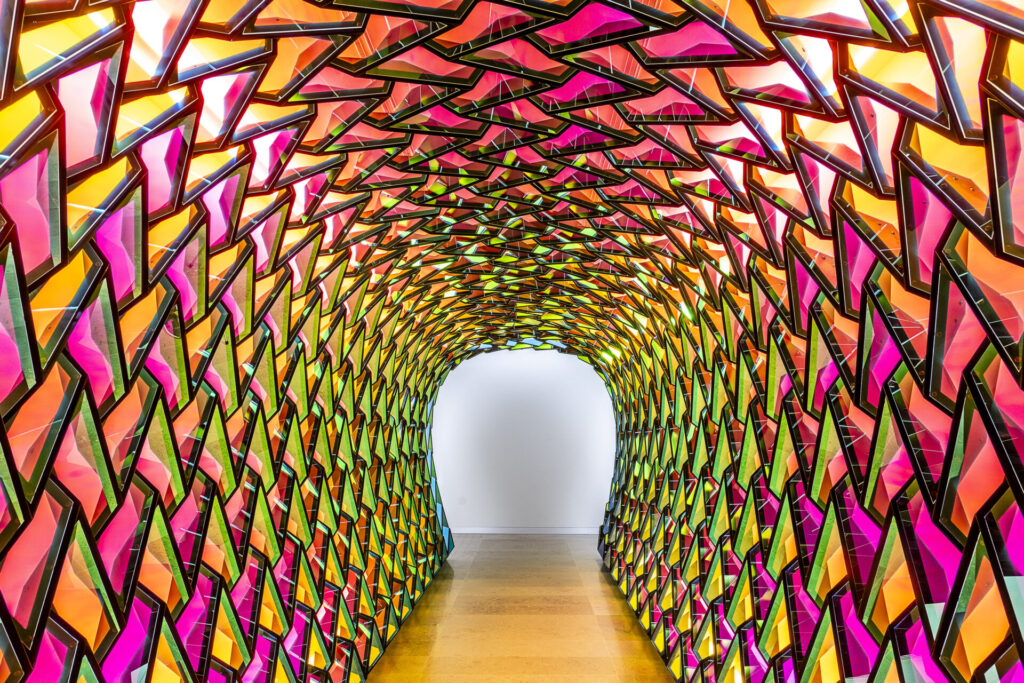
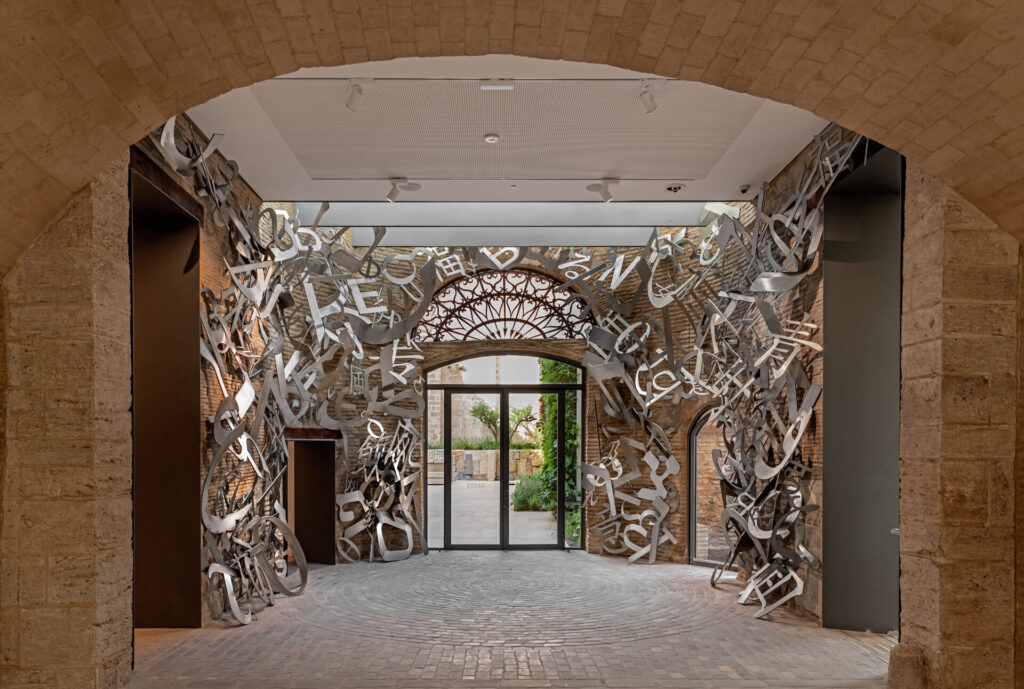
Six site-specifics at the CAHH
The space that accommodates this exhibition, the former Palacio de Valeriola, has been restored by the ERRE Architecture studio. Moreover, the beauty of a unique historical space containing the whole history of the city has been enhanced by specific interventions in six corners of the art centre. These are six site-specifics, created by artists of international stature, that merge with the building. Jaume Plensa, who visited the CAHH during the restoration process, has intervened in the apse, which connects the mansion to the garden. The “navel” of the building — melic in Catalan, as Plensa himself dubbed it — now has its walls inundated with letters and symbols in various alphabets from all over the world. Tomás Saraceno has created an installation comprising six clouds composed of irregular tetrahedrons and dodecahedrons and covered with iridescent panels, which completely fill the sixteen-metre-high entrance hall. Sean Scully has intervened in the former chapel of the Palacio, filling the space with colour. Scully suggested carrying out a comprehensive transformation of the chapel that would include both the windows in the walls and the glass in the dome. His intervention was completed with one of his paintings from the Landline series, characterized by horizontal stripes in various colours. Cristina Iglesias has transformed the connection between the main building and the annex, so that visitors will be able to feel they are inside her work. Olafur Eliasson has brought to life another of the passages in the building, creating a tunnel with two quite distinct perspectives: the view at the entrance, in which we can see 1,035 pieces of glass, each with a different design and position, containing all the colours of the rainbow, and the view looking back from the exit, where we see a black tunnel. Finally, there is Mat Collishaw, whose work is characterized by treating classical themes from art history with modern technology. Hortensia Herrero was fascinated by the video Sordid Earth created by Collishaw for Rod Arad’s curtain (which Hortensia Herrero herself brought to Valencia in the summer of 2022), so she commissioned him to produce a video specially for the art centre. She slipped in the idea that it could be inspired by the Fallas of Valencia, another of this patron’s great passions.
In short, they are six interventions that not only enter into a dialogue with the space but end up being integrated into the building itself and further enhancing its uniqueness. All these works will remain in the art centre permanently, enriching its architecture and investing this building with soul.
Supporting the Valencian art ecosystem: the Abierto València room
As the art centre is situated in Valencia, Hortensia Herrero was determined not to forget the city’s more emerging art and its gallery ecosystem. As Javier Molins explains, the Valencian patron “first started collecting in her own city by acquiring artworks by the artists who exhibited in its galleries for her own enjoyment in the privacy of her own home. It is a practice that she has continued over time and has institutionalized through the acquisition prize she awards every year as part of the event known as Abierto València (Open Valencia), with which the galleries of Valencia launch the September season. From 2014 to 2022, twenty-one works by sixteen artists have been added to the Hortensia Herrero collection through this acquisition prize, and two rooms in the CAHH have been fitted out to show a selection of these works acquired in the galleries of Valencia.”
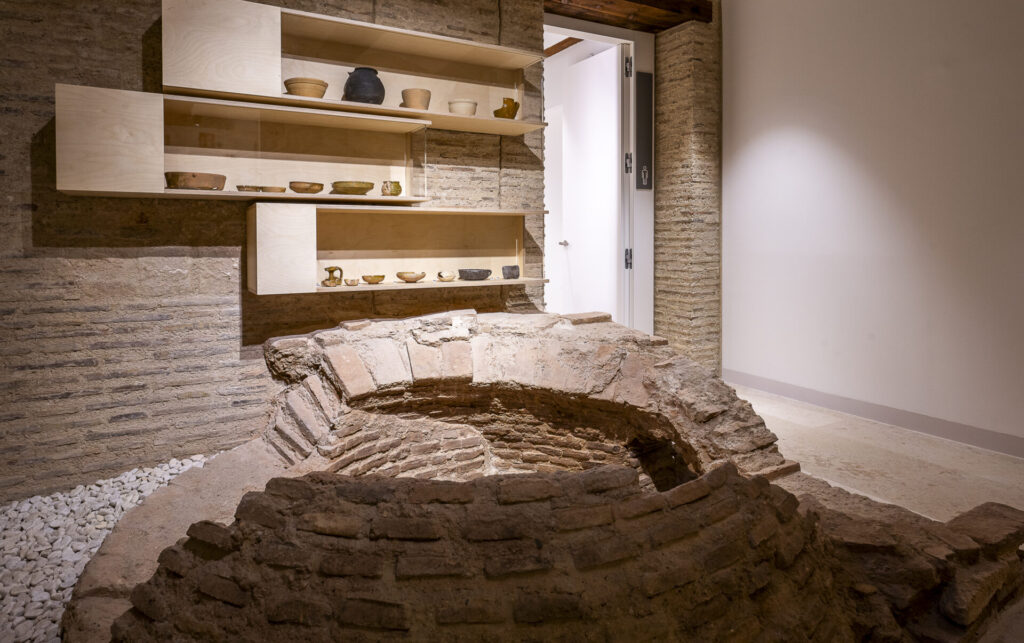
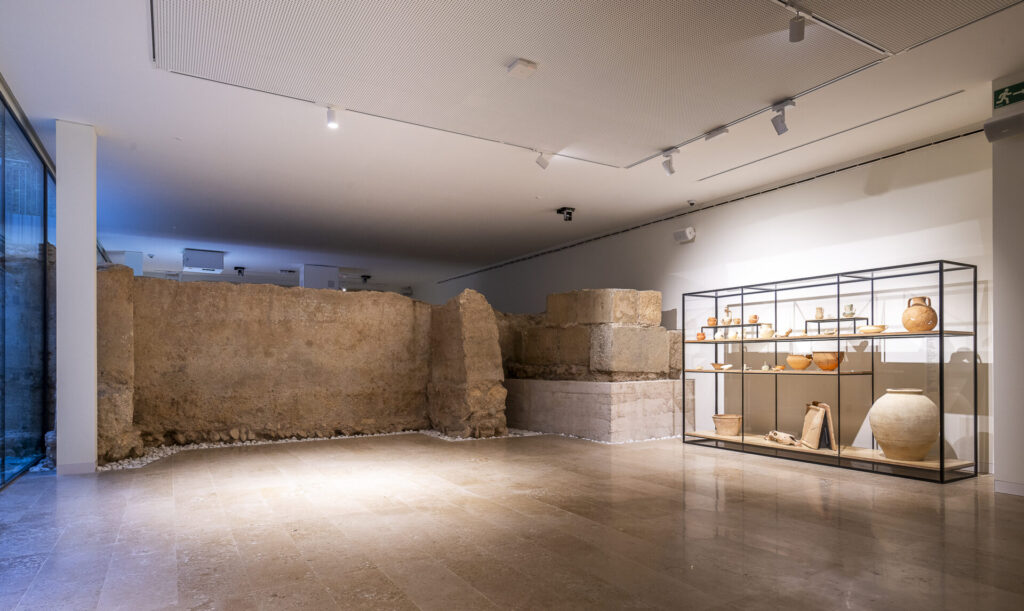
A unique space
As if the selection that forms this first exhibition were not enough, its container, the actual building that houses the Hortensia Herrero Art Centre, is a work of art in itself. It is located in the former Palacio de Valeriola, an iconic construction in a Baroque style which encapsulates the history of the city, from Roman, Visigothic and Islamic times to the Christian era: a space like few others in Valencia in which to see and admire the past. Moreover, a fragment of the Roman circus of the ancient city of Valentia has been found in the subsoil.
The site was part of Muslim Balansiya between the eleventh and thirteenth centuries, and remains of two fountains belonging to an Islamic patio have been found in it. One of them has survived in good condition and can be viewed by visitors to the art centre. This eight-pointed fountain, and the other, which is more damaged, stood at either end of the pool in a large courtyard with a border of plants, framed by channels around the perimeter and rotundas at the corners, through which water circulated.
This courtyard belonged to the large Islamic house of Haçach Habinbadel. It also constitutes the last vestige of the Jewish quarter, as can be seen in an alley that lies within the art centre and has also been recovered for visitors to enjoy. Later on, the construction of the Palacio de Valeriola became a showcase for the opulence of Valencian Baroque society.
The restoration of the building, which was in a very advanced state of dereliction when Hortensia Herrero acquired it, was undertaken by the ERRE Arquitectura studio. Amparo Roig, one of its three partners, also took part in the presentation of this new exhibition space:
“We fell in love with this building, even though it was a ruin. A ruin that was lucky enough to catch the eye of Hortensia Herrero, with unstinting investment of time, cost and loving care. And in order to breathe life into the building, ensuring its continuity over time. From the outset we aimed to recover the original character of the existing building, reinforcing the most damaged parts, of which there were many. We’ve brought out the original atmosphere of the seventeenth-century palacio while achieving an exhibition space with the modern facilities it deserves. We hope and wish that this new chapter in the history of the Palacio de Valeriola, from now on the Hortensia Herrero Art Centre, will serve to promote contemporary art of the highest level and to highlight the great value of Valencia’s architectural heritage”, explained Amparo Roig.
The exhibition area is organized around seventeen rooms distributed on four levels. One of the main challenges of the project was to design a continuous walkthrough that would offer visitors a pleasant and comfortable experience throughout an area of over 3,500 square metres. This walkthrough follows an ascending course in the Calle del Mar building and descends in the second section, adjacent to Calle de San Cristóbal, connecting with it via the building situated in the garden. The complex is completed with a landscaped courtyard, as well as a basement, where the remains of the ancient Roman circus of Valencia found during the archaeological excavations can be visited. This Roman circus was the most imposing structure in the city in the second century AD, with an area equivalent to more than three football pitches (350 metres long and more than 70 metres wide). During the excavations, several sections of the thick five-metre-wide wall of the western tiered seating area were located, another three transverse walls serving as braces, and seven buttresses on the outside of the wall. These finds have been preserved and will be open to visitors to the centre.
The restoration work has taken over five years, during which the aim has been to recover as far as possible the historical character contained in the Palacio de Valeriola, and at the same time to turn it into a leading contemporary art centre, with all the technological requirements that this entails.